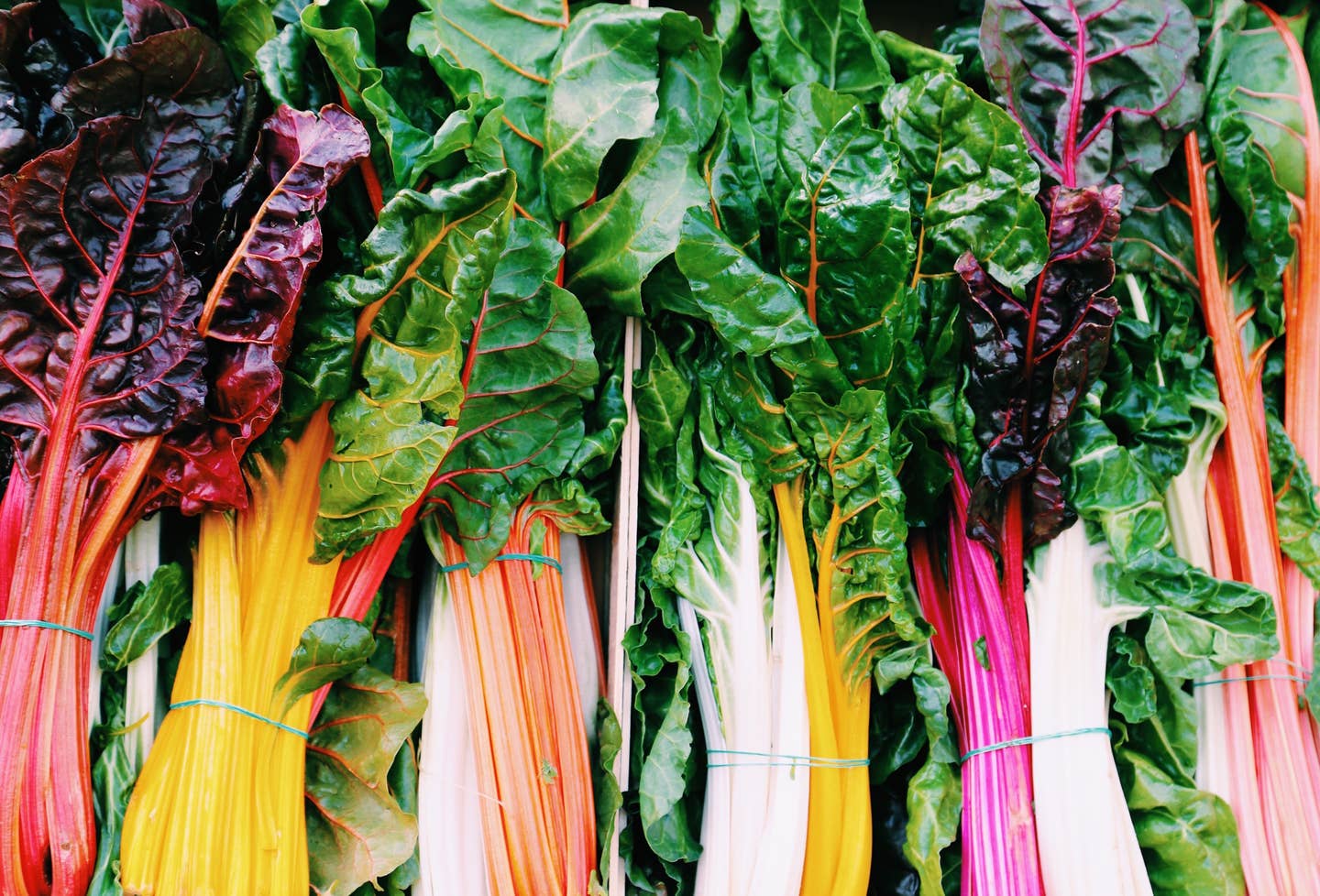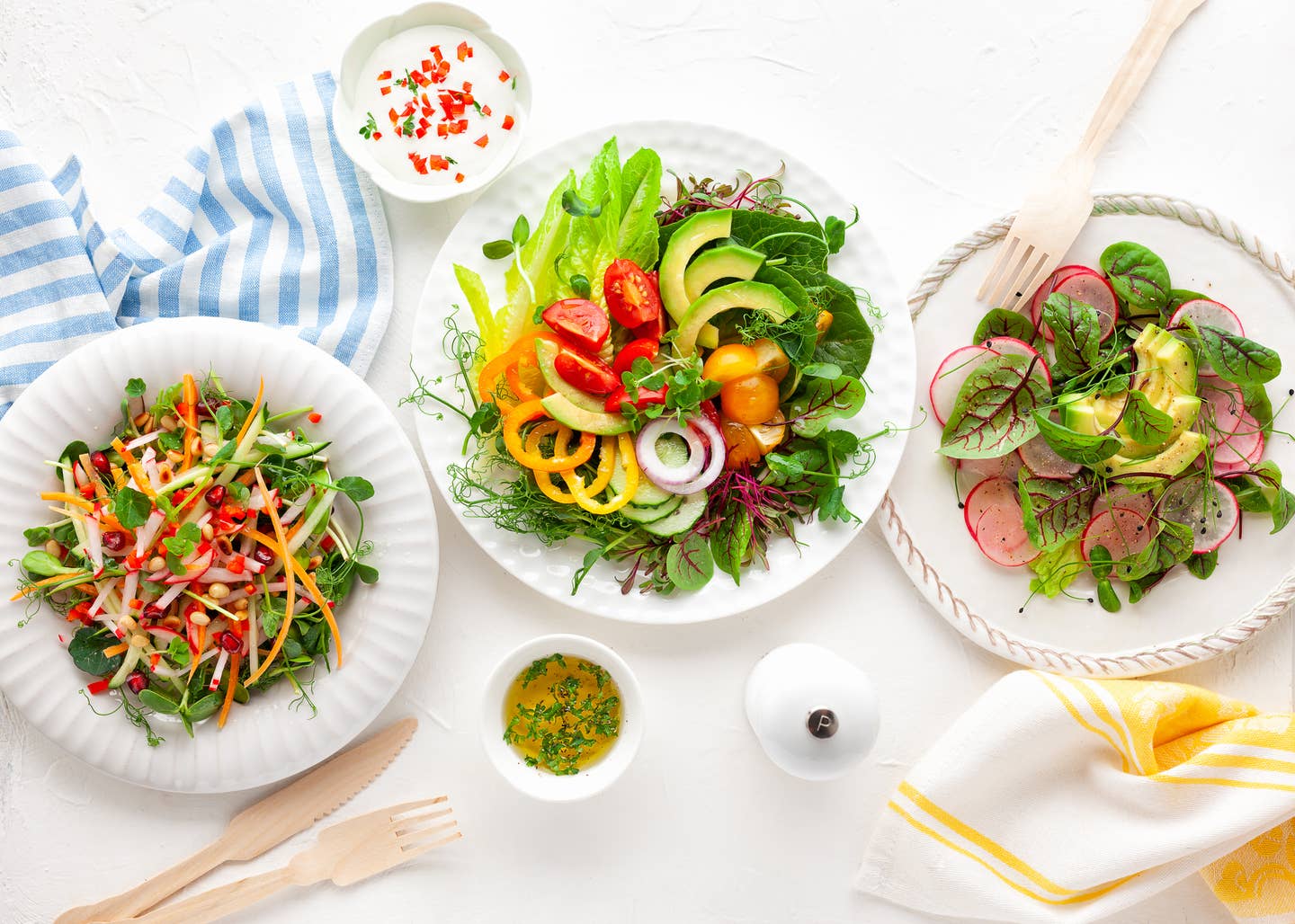
The 20 Best Sources of Fiber, Your Diet’s Unsung Hero
When people ask me what the healthiest food to eat is, I tell them anything with fiber. It's an oft-overlooked macronutrient found only in plant foods that’s actually super functional in your body. Fiber was once typecast as a mere digestive aid, but if you’re picturing your dad’s fiber supplement or are recalling ads for Metamucil, think again. Fiber is a complex carb found in vegetables, fruit, and legumes and nutritionists know that it's your secret weapon for long-term health, lasting weight loss, and prevention of chronic disease. But it turns out that most of us aren’t even close to meeting the daily requirements.
What is Fiber, Anyway?
First, a little background. Simply put, fiber is an indigestible carbohydrate that makes up the structure of plant foods. It provides the framework that allows plants to stand up straight. Where animals have a skeleton, plants have fiber. There are two types of fiber: soluble and insoluble.
Think of soluble fiber like a sponge: it soaks up water and leaves you with a feeling of fullness. It also absorbs excess cholesterol, hormones and toxins and helps move them out of the body. Soluble fiber is primarily found in foods like oats, apples, beans, lentils, and carrots.
Insoluble fiber, on the other hand, is more broom-like. It’s a hard-to-digest compound that humans technically aren’t able to break down and absorb, so this type of fiber actually passes through our digestive system relatively unchanged, sweeping other waste out with it. Think of insoluble fiber as the roughage from plants, like celery and broccoli stems, the skin of many fruits and vegetables, and the outer shell or kernel of whole grains and corn.
You definitely need both types in your diet but don’t worry about calculating gram goals for each. It’s the overall total fiber that you need to focus on—and eating a diet rich in plant foods should easily get you to your target—more on that below.
Fiber and Your Gut
Insoluble fiber is also known as fermentable fiber because as it passes through the colon unchanged, it serves as fermentable food for the trillions of bacteria living there.
Known as your gut microbiome, this symbiotic colony is responsible for numerous health processes in the body, including making certain nutrients and neurotransmitters, boosting immunity and even helping to balance blood sugar and modulate weight. Consuming high amounts of fermentable, insoluble fiber is crucial for the optimal functioning of your microbiome—and for your health in general.
How Much Fiber You Need
According to the Institute of Medicine (IOM), here are the following fiber recommendations.
Men 50 and younger: 38 grams of fiber per day
Women 50 and younger: 25 grams of fiber per day
Men over 50: 30 grams of fiber per day
Women over 50: 21 grams of fiber per day
The Institute of Medicine also specifies that fiber should come from whole food sources, not supplements.
In contrast, the American Heart Association (AHA) recommends that all adults get 25-30 grams of fiber daily. But we're falling short: Current averages state that Americans' daily fiber intake is only around 15 grams per day or about half the recommended amount. In fact, fiber is one of the most under-consumed nutrients in the Standard American Diet (SAD).
So how do you get the 30 grams that are recommended a day?
Turns out it's not that hard. A bowl of steel-cut oatmeal (one cup) has 8 grams, a kale salad with broccoli and chickpeas has around 15 grams, while a cup of lentil soup has around 8 grams. See our chart below for the top 20 sources of fiber to add to your diet—all while eating delicious, plant-based foods.
If you like popcorn you can get four grams of fiber per serving (about 3½ cups) so go get yourself an air popper and enjoy air-popped popcorn without added oils, for a great source!
The Health Benefits of Fiber
It’s unlikely that you’ve ever heard of anyone attributing their health or weight loss success to fiber, but that’s why it’s truly an unsung hero. Fiber works in the background and is one of the primary reasons why a predominantly plant-based diet is considered so healthy. Fiber does a host of good for your body, including:
- Keeping your cholesterol in check: Soluble fiber has been shown to help keep low-density lipoproteins at reduced levels.
- Removing excess hormones: Extra estrogen and cortisol get flushed out with a big dose of fiber, leading to a more balanced hormone environment.
- Balancing blood sugar: Soluble fiber helps slow blood glucose absorption.
- Assisting with weight loss and weight maintenance: Fiber helps keep you feeling fuller longer, which studies have shown leads to reduced overall calorie intake and helps maintain weight at healthy levels.
- Supporting your gut microbiome: Fermentable fiber feeds good gut bacteria so they can create short-chain fatty acids and other nutrients for the body to utilize.
- Eliminating toxins: Fiber binds harmful toxins and helps them leave the body daily.
- Reducing your risk of cancer, heart disease, and diabetes: Studies have shown that a diet rich in fiber can reduce your risk of colorectal cancer and metabolic syndrome (a cluster of chronic conditions including heart disease and diabetes).
- Fiber can assist with your gut health and IBS: Whether you have constipation or diarrhea, fiber increases the weight and volume of your stool, making it easier to pass.
The Top 20 Fiber-Rich Foods to Add to Your Plate
Here are the 20 most fiber-rich foods—note that they're ones you’re probably already eating on a plant-based diet (go ahead, high-five yourself!).
Lentils = 1 cup has 16 grams of fiber
Black beans = 1 cup has 15 grams of fiber
Pistachios = 1 cup has 13 grams of fiber
Prunes = 1 cup has 12 grams of fiber
Corn = 1 cup has 12 grams of fiber
Chickpeas = 1 cup has 10.6 grams of fiber
Artichokes = 1 artichoke has 10 grams of fiber
Peas = 1 cup has 9 grams of fiber
Oatmeal = 1 cup has 8 grams of fiber
Raspberries = 1 cup has 8 grams of fiber
Avocado = ½ avocado has 7 grams of fiber
Pears = 1 medium unpeeled pear has 6 grams of fiber
Chia seeds = 1 tablespoon has 5 grams of fiber
Brown rice = 1 cup has 4 grams of fiber
Apples = 1 small, unpeeled apple has 4 grams of fiber
Broccoli = 1 cup has 2.4 grams of fiber
Kale = 1 cup has 2.6 grams of fiber
Spinach = 1 cup has 4.3 grams of fiber
Celery = 1 cup has 1.6 grams of fiber
Dark chocolate = 1 ounce has 3.1 grams of fiber
Check out a few of our favorite fiber-rich lentil recipes and get your daily dose.
Bottom Line: If you can get 30 grams of fiber a day, you'll feel great, be healthier in the long-term and help your body maintain your weight.
Here's a small caveat: You don't need much more than the recommended 30 grams/day: In fact, excess fiber can block the absorption of some minerals such as calcium, iron and zinc by binding them in the gut, which is why if you take a vitamin or mineral supplement, you shouldn't take it at the same time as any meal containing fiber. Fiber excess can sometimes result from taking too much of a fiber supplement. You’re unlikely to overeat whole-food-based fiber, however, since the fullness effects are usually self-regulating. So as always, eat your nutrients, fiber included!
More From The Beet






